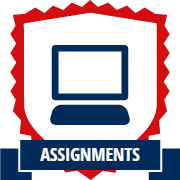|
This assignment is due by Thursday, October 10, 2019 by 11:59pm.
It seems you've been able to evade the Intern as you no longer have a shadow. Returning to your ride you find construction
tape blocking the entrance and a permit displayed next to your sign. Wonderful! Construction has begun on your ride! You
get closer to read the fine print of the permit.
20 September 2019
Hanan Pacha
PERMIT FOR CONSTRUCTION OF MEGA-COASTER
Please be advised that construction has begun on the latest attraction at Hanan Pacha - the Mega-Coaster! No access without
express permission from Sapa Inka. Stay clear of the area until work has completed.
Mega-Coaster?! What Mega-Coaster? This is where my ride is supposed to go!
You storm off looking for the man that seemed to always be around, until now. There seems to be a commotion going on near the great temple
so you head that direction. Approaching nearer, there is a bright glowing orb hovering above. You don't recall
seeing that before.
As you push through the crowd and get near the front, the man is trying to calm everyone down. Luckily, he sees you and grabs you by
the arm.
Quick! They'll eat me alive out here. We must head inside. I've been waiting for you. Sapa Inka wants to see you right
away.
Perfect. Maybe now I'll find out what's going on.
As you move through the temple, you can no longer hear the sound of the crowd outside. You don't remember making any turns, but you
feel that you've been walking too long compared to the size of the temple. Are you going underground?
The man stops abruptly and you nearly walk into his back. He points to a sign on a narrow wooden door.
Lasciate ogni speranza,
voi ch'entrate.
He nods at you and swings the door open motioning for you to enter. You proceed.
Part I - Build Your Coaster
Quickly scanning the room, there are nearly fifty other people gathered - and you saw them around the park as you ran through. Why are they
here too? You find the last remaining open seat and wait for whom you assume is Sapa Inka to speak as they have already made their way to the podium.
"We have asked all of you here as you all have the same quest - to make Hanan Pacha the most successful theme park. For years we have been
trying to win a Golden Ticket but our attractions were never good enough. Alone, none of you will ever have the resources to build the one great
ride. But together, perhaps you can find a way to make the tallest and fastest and best ride on the planet.
We will build the Mega-Coaster in our park but we need to theme areas of the park. Please create a new land for us to build around the Mega-Coaster.
Here, take one of these flyers and start right away. Resources are limited so you must hurry. We wish to open the park in a few months time so
any delay will hinder our chances for the award."
You quickly take one of the flyers as they go by and begin reading:
The Golden Ticket has a series of jugding criteria. There are four in all, each testing a different skill
you have learned in your travels. You must choose some of your fellow Heroes to join you in your land. Hanan Pacha has thirteen lands and each
have enrollment slots available. Each land can accept three Heroes.
The first part of your midterm project is to assemble into lands inside the park to begin construction on your ride. Construction materials
are centrally located, so you may only partner with other characters located in your park section (Inti or Supay). Our class will have
ten teams of three and two teams of four (one in Supay and one in Inti). Once you have formed your team, one member of your
team must email the following to the instructor by TUESDAY, SEPTEMBER 24 11:59PM:
- The Members of Your Team
- Your Land Name
- Your Park Section
For the midterm project, you will create a roller coaster track (Hills/drops, turns, etc.) for your Heroes to ride on. Two of your Heroes
will be automatically racing along the track
while the third Hero is free to explore the world you create. Read on to understand how everything fits together.
The actual midterm project is comprised of several smaller parts, each focusing on one of the topics covered to this point. The requirements
for each section are described below.
Section A - Bézier Curves & Surfaces
Previously, we used a grid in the XZ-plane to denote our world. Now, you are to use a Bézier Surface as your ground. This curved surface
will now have changes in elevation and be more interesting to move around than a flat grid. You will need to specify the 16 contol points
that make up your world (control point specification is described below in Section D). If you wish, you may use more
than one Bézier Surface to give more detail to your world (if you do use multiple surfaces, make sure they are C1 continuous at
the mesh point).
There needs to be at least one Bézier Surface, but you are encouraged to use more that meet along their seams to create more
exciting terrain. Your Surface will be solid (i.e. made up of triangles) so be sure to traverse
your parameters correctly.
Choose one of your Heroes to be the wanderer. This Hero will be controlled by the WASD keys and can walk
around your Surfaced world. Three key points for the Wandering Hero movement:
- As the elevation changes, the Wandering Hero should follow these elevation changes. Specifically, the Wandering Hero should follow
the curves of the Surface and always stay "on top" of the Surface.
- The Wandering Hero should follow the slope of the Surface. As the Wandering Hero changes direction and moves uphill/downhill, the Wandering
Hero should always be oriented along the normal to the Surface at that point.
- The Wandering Hero is confined to the surface, i.e. the Wandering Hero cannot move off of the Surface and bounds checking must be
performed to ensure this.
The other two Heroes will be moving along Bézier Curves. You will design a roller coaster track that the other two Heroes will travel along.
The overall curve will be specified by a control file and must be closed (the start point and end point must be the same) and therefore
C0 continuous.
The curve must also be C1 continuous, you should ensure the points provided will be C1 continuous and you do not need to
enforce these continuities in program. The two Heroes will travel along the curve in different manners.
- One Hero will travel along the curve at equal parametric intervals. This means the Hero will advance
dt units, where dt is step
along the parameter t.
- The other Hero will travel along the curve at equal arc length intervals. This means the Hero will advance
dS(t) units,
where dS(t) is a step along the curve's length. Read these slides
and this article detailing the process.
These two Heroes will move automatically as your program runs. They will also be traveling at different rates so you should see them pass
and catch up to each other. Each Hero should be oriented with the tangent of the curve, so they are always facing the direction of motion. Feel
free to bank your turns and add in a roll component, in addition to the pitch and yaw you will already be doing.
HINTS:
- You are encouraged to use your Hero + Faery from A4.
- You may want to make a generic virtual Hero class and then have each of your individual Heroes inherit from the parent
Hero class. Put these into a HeroBase.h and <Hero1>.h, <Hero2>.h, etc. files.
- You may want to use a display list for your terrain.
Section B - 3D Drawing & Animation
As before, your Heroes should be made of solid CSCI441 3D Objects. Your Bézier Surface must be comprised of triangles.
Your track must also be made of solid 3D objects. Beyond the ground, track, and Heroes, you must also have two different
objects scattered around your world. Their locations will be specified by the control file (again, see below).
Whenever any of your Heroes are moving, they must be animated while they move. The other two objects may be stationary or could be animated
(think a tree swaying in the wind for instance).
Section C - Cameras & Viewports
Users will be able to experience your program from one of many view points:
- From an arcball camera that can rotate around and follows a single Hero
- From a free cam that can move about the scene
- From a first person camera attached to one of your Heroes
The user should be able to toggle between camera modes through different key presses. When the first person point-of-view camera is
turned on, it must appear as a picture-in-picture viewport within the window. Feel free to add additional cameras beyond the three listed (Sky cam,
Side-scrolling cam, Third Person cam, etc.)
In addition to be able to select which camera view to use, the user must be able to select which Hero to follow for the arcball cam or first person cam.
If you would like to have the user watch two Heroes move along the track and control the Wandering Hero at the same time, consider creating a
split screen in your application so the user can interact with both views simultaneously.
Section D - File Format
The format of the World File you will read as input is up to you to define. In your file format, a designer must be able to
specify the location of control points, as well as the location and type of objects to be placed in your scene. An example format
might look like:
<number of Bézier Surfaces for ground> |
<sixteen control points for each surface> |
... |
<number of control points for Bézier Curve track> |
<control point x> <control point y> <control point z> |
... |
<number of objects> |
<object type> <object x, y, z> <object orientation x, y, z> <object size> |
... |
As stated above, your file format is up to you to define; however, you must be able to place at least two different kinds of objects,
which can be as simple as CSCI441 3D Objects, or more complicated, like a flag or a tree. You must describe your file format in your
README.txt file. To demonstrate that your program can read in World Spec Files correctly, include two example files
with your program. They must each utilize the full functionality of your file format (i.e. must each contain objects placed in the scene and
must each specify control points for a valid track). They should be visually different and a user can distinctly tell a new world
has been entered.
Scanning the room, you instantly know who should join you in the guild. You pull them aside, speak for a
few minutes, and it's agreed. You three shall begin preparations immediately. You aspire to build the most prestigious ride
and strive to stand out amongst the other teams. You already have plans for when you return to your
ride of what you will build..
Part II - Website
Update the webpage that you submitted with A4 to include an entry for this assignment. As
usual, include a screenshot (or two) and a brief description of the program, intended to showcase what
your program does to people who are not familiar with the assignment.
Part III - Presentation
During lab on October 11, each Land will present their world, Heroes, and track. During this time, the other Lands will be critiquing
your project (by filling out a scoresheet) and at the end everyone will vote
for their favorite Land that they won the Golden Ticket.
Documentation & Submission
With this and all future assignments, you are expected to appropriately document your code. This includes
writing comments in your source code - remember that your comments should explain what a piece of code
is supposed to do and why; don't just re-write what the code says in plain English. Comments serve the dual
purpose of explaining your code to someone unfamiliar with it and assisting in debugging. If you know
what a piece of code is supposed to be doing, you can figure out where it's going awry more easily.
Proper documentation also means including a README.txt file with your submission. In your
submission folder, always include a file called README.txt that lists:
- Land Name / Land Members
- Assignment Number / Project Title
- A brief, high level description of what the program is / does
- A usage section, explaining how to run the program, which keys perform which actions, etc.
- Instructions on compiling your code
- Notes about bugs, implementation details, etc. if necessary
- NEW: A description of the file format that your program reads as input
- NEW: A rough distribution of responsibilities / contributions of each student
- How long did this assignment take you?
- How much did the lab help you for this assignment? 1-10 (1 - did not help at all, 10 - this was exactly the same as the lab)
- How fun was this assignment? 1-10 (1 - discontinue this assignment, 10 - I wish I had more time to make it even better)
Grading Rubric
Your submission will be graded according to the following rubric.
| 45% |
Track is closed (end point = start point), C0
continuous, & C1 continuous. (This doesn't need to be enforced in-program, as long as input control points s
pecifiy C0 & C1 continuous curves.)
One Hero moves by arc-length parameterization and moves at a constant speed regardless of control point spacing. The other
Hero moves by equal parameter steps.
Terrain is comprised of Bézier Surfaces. The Wandering Hero can be controlled and moves around the terrain properly. |
| 10% |
Heroes are animated & comprised of CSCI441 3D Objects. Scene
is comprised of track and other scenic objects. |
| 25% |
Arcball camera follows Hero and rotates correctly; user
can control rotation. Free camera is correctly implemented, can move around the scene, and is user-controllable.
Camera from Hero's point of view works correctly; it is attached to the Hero and looks along the Hero's direction of movement.
First-person camera view is placed in a separate viewport. User can toggle between cameras through use of a keypresses.
User can toggle between Heroes to follow through keypresses as well. |
| 5% |
File format is documented in the README.txt file.
A third-party should be able to write a World Scene in your format based on your documentation. File format supports two
different types of objects that can be placed in the scene and objects are correctly placed and rendered in the scene. Two
non-trivially different example files are included. Each example fully utilizes the file format (i.e. places objects of each type). |
| 15% |
Submission includes source code, Makefile, and README.txt.
Source code is well documented. Webpage named <HeroName>.html submitted and updated with screenshot from latest
assignment. Submission compiles and executes in the lab machine environment. Presentation is of high quality and equal division
of work is reported by team members. |
Experience Gained & Available Achievements

Assignments +150 XP
|

Web +150 XP
|

Banana Split
|

???
|

???
|

???
|

???
|

???
|
Submission
Please update your Makefile so it produces an executable with the name mp. When you are completed with
the assignment, zip together your source code, Makefile, and README.txt. Name the zip file, LandName_MP.zip.
Upload this file to Canvas under MP. Only one team member needs to submit the project source code.
Every team member needs to submit their individual website under MP Website. Name the zip file HeroName_MP.zip.
This assignment is due by Thursday, October 10, 2019 by 11:59pm.
|




